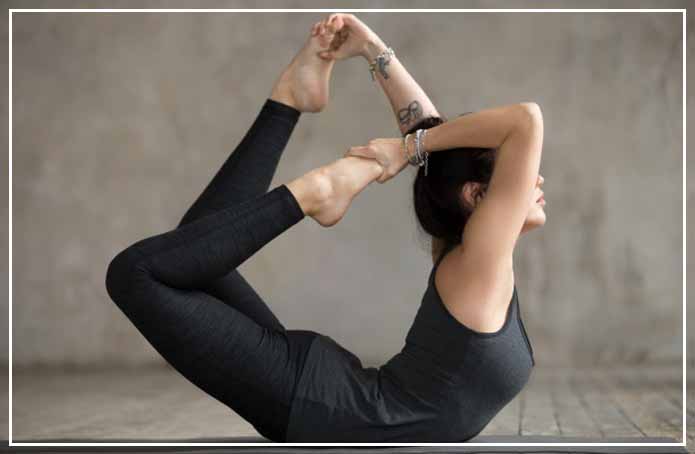In today’s life, Yoga is must for everyone. It is much better than exercises. Before knowing the correct way of doing yoga with caution, let us first know the difference between the two.
Exercises work on physical activity of the body, which causes muscles and certain vital organs in the body to become energized. It also improves blood circulation, which is beneficial to a person’s overall health. It is also helpful in preventing illnesses or diseases by reducing the unwanted weight of the body.
Yoga, on the other hand, not only works with the physical health of an individual rather is concerned with the integration of the physical, spiritual, as well as the mental well-being of a person. In the real sense, yoga means to “unite.” Thus the union of all the three major aspects of the body is Yoga.
During many yoga poses, either one is doing at home or are attending yoga classes then usually instructor asks you to do various stretches with perfection, one should do perfect yoga but, side by side one has to remind self to be extra careful in doing, as the instructor is guiding many participants simultaneously, so will not be able to give too much attention on each one. One is suffering from back pain or not, but one should always practice yoga by keeping in mind a few tips to avoid falling into the problem of backache. Also, slowly the existing backache will also be released.
While performing yogasana always pull your shoulders back and down to prevent neck and back tension. In yoga classes’ low-impact exercise is a great way to strengthen the core (including back muscles) and in turn, help reduce back pain, if one always takes care of the straight back and shoulders are pulled back, behind the ears, this will avoid back pain.
One has to learn all the ins and outs of every pose and how each affects self-body. With this base knowledge, one can leave yoga class pain-free.
Here are the five adjustments that will help one flow through yoga pain-free:
Yoga Tip 1
Pull navel in
One should always pull navel in, at all times while doing yoga. Whether one is bending forward, stretching with arms over head, or in a warrior position, pulling navel in towards spine connects the abdominals and this will help to keep back from over-arching. While there are some yoga poses in which the center of attention is on strengthening the core, usually in a pose like a swan dive or forward fold, the aim is to lengthen the spine and stretch the hamstrings. But when one bends forward at the waist, connecting abs is crucial to maintaining the integrity of the body’s alignment.
Yoga Tip 2
Relax shoulders
While stretching arms overhead, to make the fingertips towards the ceiling and ground down through the feet. When the arms are up over the head or when they’re at shoulder height (like in Warrior II), relax the shoulders down away from the ears. This helps prevent neck and upper back tension. One can do this by shrugging shoulders up towards ears and then releasing them down.
Yoga Tip 3
Engage inner thighs
Doing yoga in plank position, upward facing dog, mountain pose, and many other poses, compress the inner thighs towards each other can be an indication that’s overlooked. Whether ones inner thighs are touching or not, intentionally compressing them towards the midline of your body is important to keep the core and centerline tight. This will help one to prevent low back pain and even help improve posture.
Yoga Tip 4
Step the feet hips-distance apart
Yoga poses like crescent pose, Warrior I, and standing forward fold, opening the feet as wide as the hips allows more room for the pelvic region and low back to release instead of tighten. Typically the signal is to step one foot forward and one foot back in crescent pose and Warrior I; in a forward fold, the big toes touch or the feet are a fist-width distance apart. However, if one suffers from low back pain or over-arch your low back in these positions and step your feet out as wide as your hips.
Yoga Tip 5
Turn the hands out
In Yoga poses like downward facing dog and cobra, the typical sign is to keep hands, wrists, and forearms in alignment, parallel with the sides of the mat. However, if one has frozen shoulders, or elbow or wrist issues, try turning your hands out away from the center slightly. This will allow the shoulders to have more space and takes the pressure off of the wrists.
These five yogasanas are very much beneficial to remove back pain
“Enjoy Yoga with Correct and Safe Postures”

























